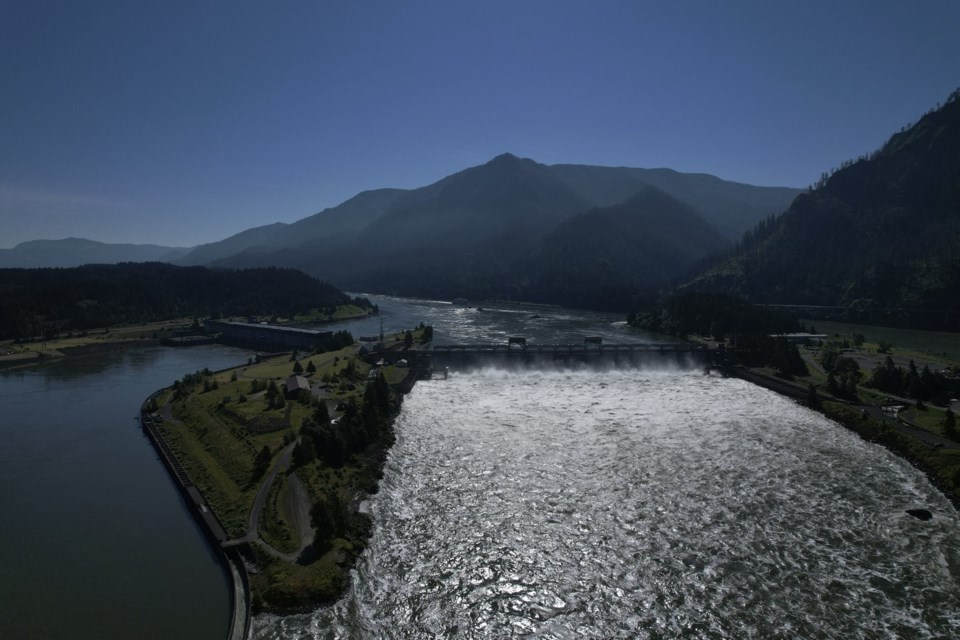SEATTLE (AP) — The U.S. government on Tuesday acknowledged for the first time the harms that the construction and operation of dams on the Columbia and Snake rivers in the Pacific Northwest have caused Native American tribes.
It issued a report that details how the unprecedented structures devastated salmon runs, inundated villages and burial grounds, and continue to severely curtail the tribes’ ability to exercise their treaty fishing rights.
The Biden administration’s report comes amid a $1 billion effort announced earlier this year to restore the region’s salmon runs before more become extinct — and to better partner with the tribes on the actions necessary to make that happen. That includes increasing the production and storage of renewable energy to replace hydropower generation that would be lost if four dams on the lower Snake River are ever breached.
“President Biden recognizes that to confront injustice, we must be honest about history – even when doing so is difficult,” Interior Secretary Deb Haaland and White House Council on Environmental Quality Chair Brenda Mallory said in a written statement. “In the Pacific Northwest, an open and candid conversation about the history and legacy of the federal government’s management of the Columbia River is long overdue.”
The document was a requirement of an agreement last year to halt decades of legal fights over the operation of the dams. It lays out how government and private interests in early 20th century began walling off the tributaries of the Columbia River, the largest in the Northwest, to provide water for irrigation or flood control, compounding the damage that was already being caused to water quality and salmon runs by mining, logging and salmon cannery operations.
Tribal representatives said they were gratified with the administration’s formal, if long-belated, acknowledgement of how the U.S. government for generations ignored the tribe’s concerns about how the dams would affect them, and they were pleased with its steps toward undoing those harms.
“This administration has moved forward with aggressive action to rebalance some of the transfer of wealth,” said Tom Iverson, regional coordinator for Yakama Nation Fisheries. “The salmon were the wealth of the river. What we’ve seen is the transfer of the wealth to farmers, to loggers, to hydropower systems, to the detriment of the tribes.”
The construction of the first dams on the main Columbia River, including the Grand Coulee and Bonneville dams in the 1930s, provided jobs to a country grappling with the Great Depression as well as hydropower and navigation. But it came over the objections of tribes concerned about the loss of salmon, traditional hunting and fishing sites, and even villages and burial grounds.
As early as the late 1930s, tribes were warning that the salmon runs could disappear, with the fish no longer able to access spawning grounds upstream. The tribes — the Yakama Nation, Spokane Tribe, confederated tribes of the Colville and Umatilla reservations, Nez Perce, and others — continued to fight the construction and operation of the dams for generations.
“As the full system of dams and reservoirs was being developed, Tribes and other interests protested and sounded the alarm on the deleterious effects the dams would have on salmon and aquatic species, which the government, at times, acknowledged,” the report said. “However, the government afforded little, if any, consideration to the devastation the dams would bring to Tribal communities, including to their cultures, sacred sites, economies, and homes.”
The report was accompanied by the announcement of a new task force to coordinate salmon-recovery efforts across federal agencies.
Gene Johnson, The Associated Press



